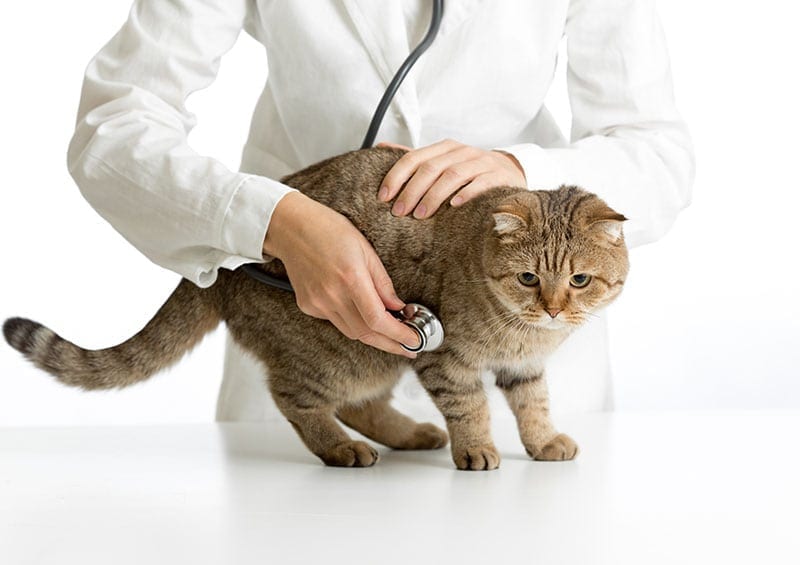High blood pressure is an important concern in humans. Stressful lifestyle, high salt (sodium) diets, and smoking all contribute to this dangerous condition in people. Our pets don’t smoke or stay awake worrying about their next mortgage payment and they do not deposit cholesterol in their blood vessels. However, our pets do get high blood pressure.
High blood pressure causes problems when a blood vessel gets too small for the high-pressure flow going through it. Picture a small garden hose attached to a fire hydrant. The garden hose would not be able to handle the high water pressure causing it to explode. In the pet’s body instead of water going everywhere from the hose exploding, bleeding results from the blood vessel rupturing. Often this occurs in small blood vessels and goes unnoticed, but many small bleeds and multiple blood vessel damage can lead to big problems.
Two organs most commonly affected are the eye (retina) and kidneys. When the retina of the eye is affected from acute or chronic hypertension, blindness results. The kidney has many tiny vessels to filter toxins from the bloodstream and can result in kidney failure.
High blood pressure also increases the risk of embolism (tiny blood clots) that forms when the blood flow is altered. These clots can lodge in a variety of locations, including the brain.
What causes high blood pressure in pets?
The most common diseases causing systemic hypertension in animals are:
- Chronic renal (kidney) failure
- Diabetes (inability to properly reduce blood sugar)
- Hyperthyroidism (increased thyroid production)
- Cushing’s disease (increased hormone, cortisone, production)
In humans, high blood pressure is often considered a ‘primary’ disease, meaning there is no underlying disease leading to the high blood pressure. In animals, there is almost always another disease causing the increase in blood pressure. If routine testing does not identify the problem, your veterinarian will often recommend further testing.
How is blood pressure measured in pets?
Blood pressure measurement is performed similarly to the method in humans. An inflatable cuff is used around the pet’s limb or foot. Occasionally, the base of the tail can be used for measurement. As the cuff inflates, the blood flow is occluded. In humans, as the cuff is deflated, a stethoscope is used to listen for the point when the blood pressure is adequately pumping through the partially occluded vessel. This ‘stethoscope listening’ method cannot be used in animals, as it is not sensitive enough. A Doppler or a special device to measure oscillations in blood vessels must be used. As when you get your own blood pressure measured, the cuff is inflated until the pulse is no longer heard (systolic pressure), then air is slowly allowed to leak out until the beating pulse is heard again (diastolic pressure). When using a Doppler method in animals, the volume change is difficult to detect and blood pressure is measured as one value. Blood pressure trends in repeated measurements are more accurate than a single measurement. Systolic blood pressure measurements should be less than 100-160mmHg and diastolic values, 60-100mmHg.
Diabetes coupled with chronic kidney failure and/or high blood pressure is intricately involved and the progression of one impacts the progression of the other, making the control of each disease difficult. It is important to have regular screenings and treatments for any urinary tract infections and periodic blood pressure testing routinely with your veterinarian.
If your veterinarian does not have access to blood pressure monitoring equipment, see if they will refer you to a veterinarian with this ability. Consult your veterinarian before making changes to any monitoring or treatments.
Wags,
Dr. Gary
NOTE: Consult your veterinarian first to make sure my recommendations fit your special health needs.







Leave A Comment